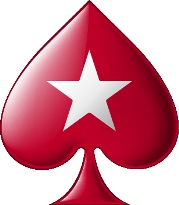This poker game allows for even more control in some ways, as you will be able to see if your or another’s hand is the only one eligible to win the low side of the pot when you get to fifth street. Let’s assume the guy’s cat is off to the litter box and the human is back on the game and gets a good low hand: 2345. For this section, we’ll explore how well different variations of this fare against two of the three hands we talked about in the last section. First, 2345 is of four different suits.
The results are shown here:
Seven-Card Stud Sample Fourth Street |
|
| Hand | Percentage of Money Won |
| A♦-A♣-8♦-10♠ | 22.2% |
| J♣-9♣-10♥-Q♠ | 29.4% |
| 2♥-3♦-4♣-5♥ | 48.4% |
Whoever knew Deuce-through-Five could be so strong? If you play high-low Stud, you’ll know it’s extremely powerful. The main thing working against this hand is that it doesn’t have a flush draw, and two of its cards to make a straight: the A♦ and the A♣ are dead. It, therefore, has three chances to catch one of six cards (the remaining two Aces and any of the four Sixes) to make its straight and low simultaneously. The problem with this is that the four-card straight draw in the second hand has one more card it can catch (Seven, as one Eight and no Kings are dead) to make a better straight. In addition, it can be harder than one thinks to make a low in Stud. While this hand will very often make a winning low, it will not always do so. The second hand has no chance of a low, but the first hand can catch three consecutive low cards to qualify. In case no low hand qualifies, as you remember, the highest hand takes the entire pot. The good news here is that the third hand will be contributing 33.3 percent of the total money in the pot, collecting 48.4 percent of it when the hand’s over. Poker players thank their lucky stars for this kind of advantage.
Let’s now see what happens if the low hand has two suited cards other than diamonds or clubs, as the other hands hold those draws. Here are the results:
Seven-Card Stud High-Low Sample Fourth Street 2345 with Two Hearts |
|
| Hand | Percentage of Money Won |
| A♦-A♣-8♦-10♠ | 22.2% |
| J♣-9♣-10♥-Q♠ | 28.8% |
| 2♥-3♦-4♥-5♥ | 49.0% |
Perhaps you’re surprised the flush draw didn’t make that much of a difference. In this hand, three hearts would need to come on the last three cards to make a flush, which this simulation indicates would happen 0.6 percent of the time. That’s six times per one thousand opportunities. The good news is that you’re still betting and raising all you can because you are still getting back way more than you’re investing. Three suited cards are shown here:
Seven-Card Stud High-Low Sample Fourth Street 2345 with Three Hearts |
|
| Hand | Percentage of Money Won |
| A♦-A♣-8♦-10♠ | 20.6% |
| J♣-9♣-10♥-Q♠ | 26.0% |
| 2♥-3♥-4♥-5♥ | 53.4% |
We’re above 50 percent now with an increased expectation of 4.4 percent, but we’ve been unable to really jump into complete dominance. That doesn’t happen until all four of the low hand’s cards are suited, in which case it will win approximately 70 percent of all money bet. It’s interesting to think about: The difference between catching two of the same suit out of three cards is only 4.4 percent more money collected than needing to receive three in the last three cards. Flushes are hard to make in Stud! Still, every little bit helps, and as we’ve said before, if you’re not betting and raising as much as possible with the low hand, you’re making a big mistake.










